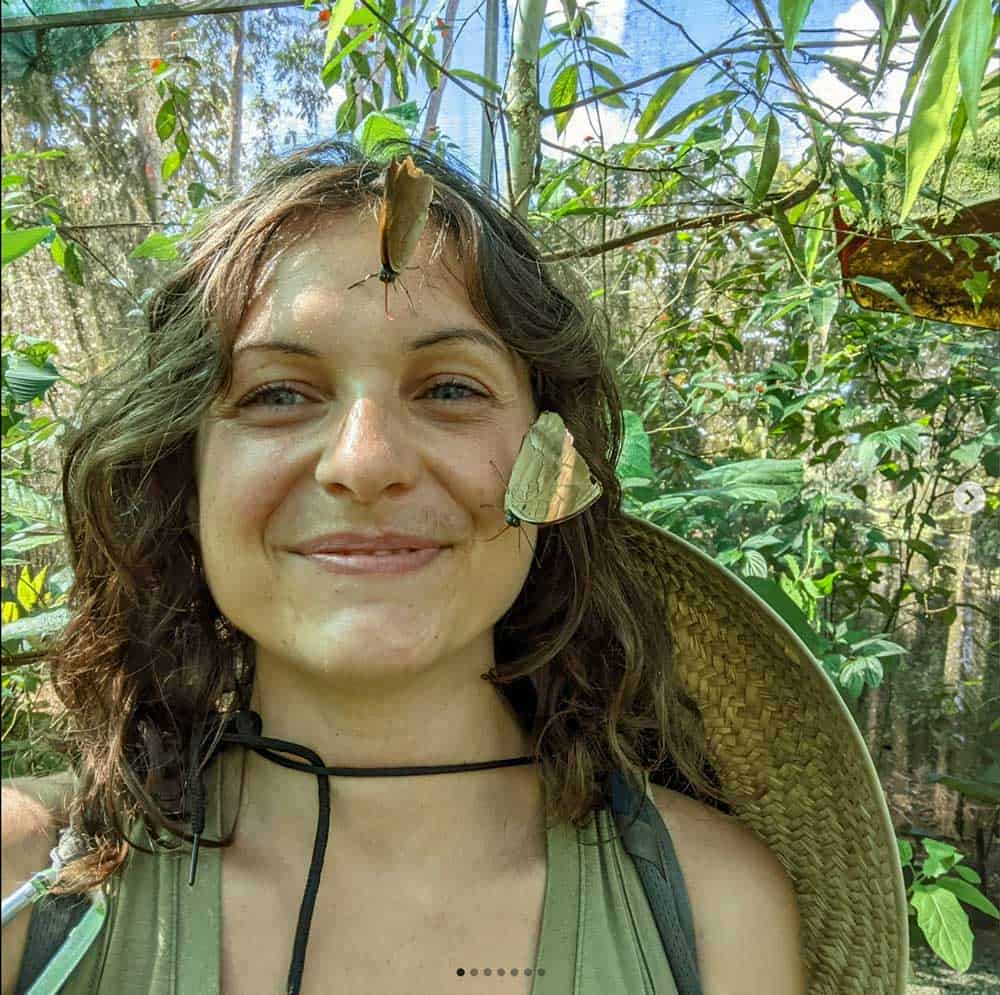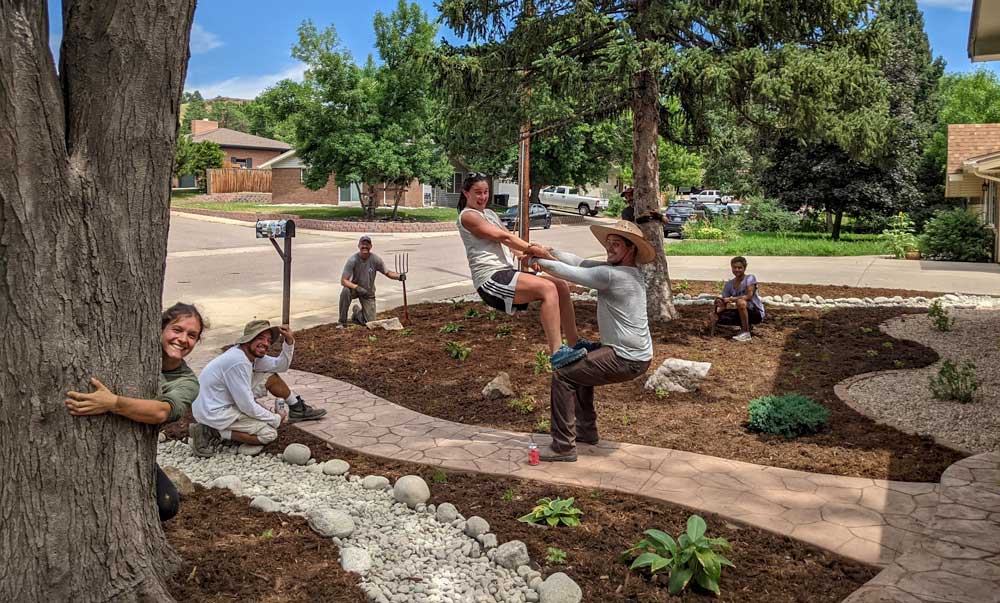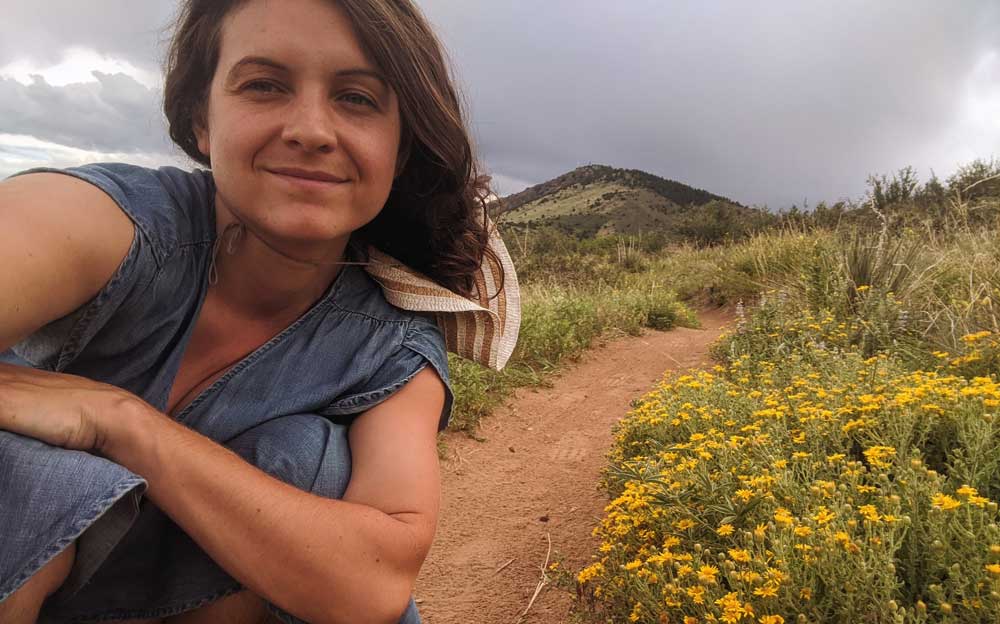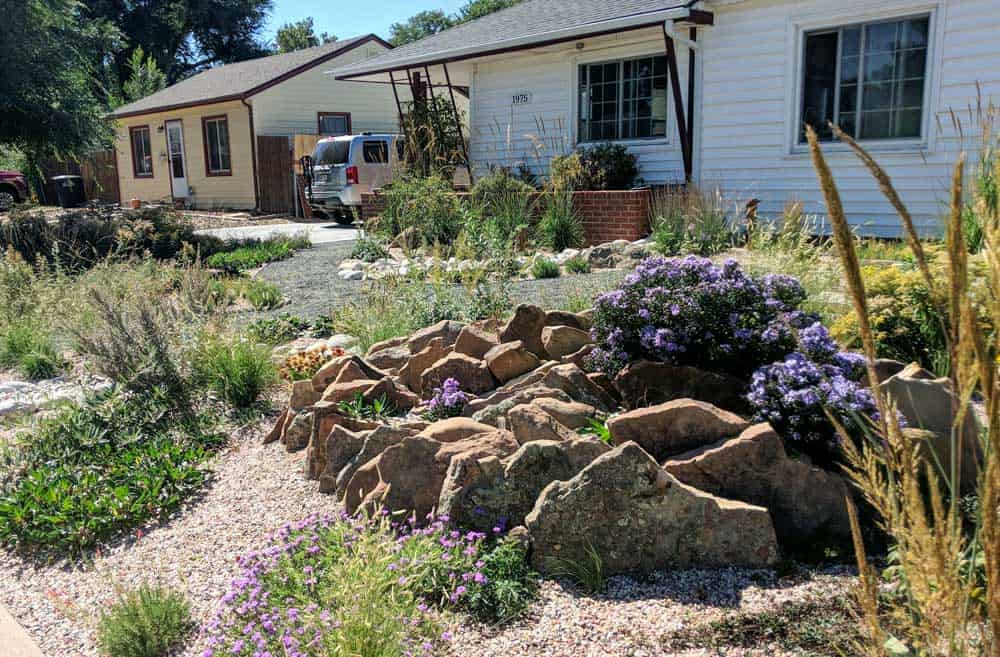Eryn Joy Murphy is the owner of Restorative Landscape Design, a Denver-based permaculture designer with a special passion for landscaping with native plants. She is also author of the recently released DIY Coloradoscape Guide for Front Range gardeners.

Marshall Cutchin: Eryn, can you share with us how your journey began, from traveling and working in Asia to your deep connection with nature?
Eryn Joy Murphy: Oh, that is a long story. In my twenties I was teaching English in Korea and traveling around Asia.
I ended up in this little village on the outskirts of the Chitwan jungle, and was kind of adopted, along with a couple of friends of mine, by this old Nepali man named JuneBaba. He and his whole village had grown up inside the jungle, deep inside of it, before being relocated to the edge by the Nepali government.
He and I would go for walks in the jungle, moving slowly, very silently. Just for hours—listening, and watching, and stopping. Barefoot and reverent and curious. I never knew, when I stepped outside the mud hut every morning, what I’d see first…a flock of birds dancing overhead, or snails crossing my path that were as big as my hands and as colorful as jewels. I was completely absorbed by this place, and somehow, I felt like I was getting to know myself too. Junebaba called me the Jungly Queen. The longer I stayed, the more I was part of the jungle, and by becoming part of the jungle, it was knowing myself in a way that I never had. I was brought into my body for the first time. That was where I first started to really listen to the earth, and sort of developed this relationship with it.

Marshall Cutchin: I can relate to that—to falling in love with a place, and finding yourself through that immersion. How did you get from there to habitat restoration?
Eryn Joy Murphy: Well, when I got back to the States and settled in Colorado, I took a Permaculture Design Course here in Denver. Permaculture design is about learning from nature’s own systems to create sustainable landscapes. It’s about working with the land, not against it, to cultivate food forests and other regenerative systems. I found it inspiring, although it traditionally has been focused on agriculture and other human needs. For me, what I was passionate about was restoring habitats for the broader ecological community.
Marshall Cutchin: So how did you get from there to native plant gardening and habitat restoration?
Eryn Joy Murphy: The inspiration came from recognizing the stark contrast between the vibrant ecosystems I encountered in my travels and in the mountains of Colorado, and the often sterile, disconnected landscapes we’ve created in our suburban and urban environments. I didn’t know how habitat restoration worked, but there came a point in my life when I decided to commit to figuring it out. I wanted to know how to bring that sense of wildness back into our lives, making our spaces alive again. I mean, who doesn’t want their garden to be a buzzing, vibrant spot that feels like a piece of the natural world? When I learned how our urban spaces are basically food deserts for birds, because we don’t have enough native plants in our landscapes, it felt like the missing link of information that I was looking for.
I saw native plant gardening as a way to bridge this gap, to bring the wildness and vitality of nature into our daily lives. By restoring native habitats, we not only support biodiversity but also nurture a deeper connection with the land, fostering a community that values and protects its natural heritage.

Marshall Cutchin: That is the way so many of us find native plant gardening—by loving a place, mourning the destruction of landscapes that we love, and wanting to step into the role of nurturing and protecting our local ecologies as a response to that. What challenges and successes have you encountered in your native plant landscaping projects?
Eryn Joy Murphy: Hmm. One project that stands out is the transformation of an HOA park into a native plant garden in Lafayette. This project was unique and exciting because it involved the entire community from the outset. The biggest challenges were finding funding for this huge project, and addressing community concerns about the appearance of native plants. However, through education and engagement, we were able to overcome these hurdles.
The success of this project lies not just in the physical transformation of the space but in the shift in perception it created within the community. It showed that native landscapes can be both beautiful and functional, providing a model for sustainable living that resonates with people’s desire for a more authentic connection with nature. It’s been rewarding to see the community’s enthusiasm grow as they witness the transformation and the return of pollinators and birds to their surroundings. And the HOA board is happy because they saved 53% on water—300,000 gallons—last year!
Marshall Cutchin: It does seem like public attitudes are shifting with the times. How do you see the future of ecological landscaping and the role of native plants in addressing climate change?
Eryn Joy Murphy: The ecological landscaping movement is absolutely gaining momentum, with a growing understanding of the critical role native plants play in our ecosystems. We’ve already lost 48% of our birds here in the grasslands, and things are only going to get worse; I don’t think most people realize how critical the situation is, but it’s exciting to see how passionate people become as they learn about the importance of native plants. As climate change alters our landscapes, native plant gardening can help mitigate its impacts by providing maintained habitats for wildlife that is going to be losing lots of natural habitat range. Plants will move north, but that’s going to take a while and involve lots of vulnerability.
Our planet is facing a lot of crises at once, including water here in Colorado, and it can be draining trying to decide what to fight for. I think what makes native plant gardening so special is that it’s juicy—it’s connective, it’s colorful, it’s exciting. It makes you feel powerful and helps you fall in love with nature in your yard. I’m optimistic that as this movement spreads, it will change the way people see their relationship with, and responsibility for, the land, and that we’ll see a significant shift towards more sustainable and life-affirming landscaping and land management practices.

Marshall Cutchin: What advice do you have for individuals looking to start their journey with native plant gardening?
Eryn Joy Murphy: Listen with your feet and your senses. Go on hikes, sit in your yard—spend time being quiet and curious, connecting with the land in different places. Research what eco-region your city is in, and what that eco-region used to look like. Who used to live here? What nearby parks have been restored to approximate the former glory of your neighborhood? You can also use an app like PictureThis or iNaturalist to ID plants and find out if they’re native to your state or not.
Begin learning about the native plants in your area and the roles they play in your local ecosystem. What are your keystone plants, your local edible plants? What are the most beautiful wildflowers that were once growing where your house is now? What are the most important plants for supporting birds and local insects in your area? You can find this information by visiting native plant gardens or native plant nurseries; engaging with nonprofits like Wild Ones or your state’s native plant society; or by looking for local groups on social media about native plant gardening or pollinator gardening. Wherever you are, there are other people around you who care about this, I promise.
And then start small. Listen to what your yard wants. Plant a flower. Watch it grow.
